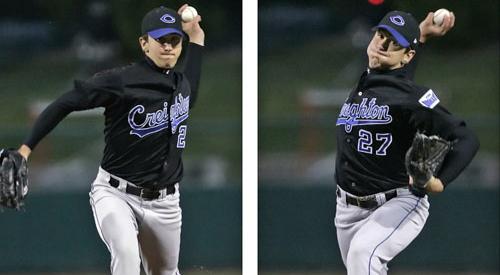
The Arm that Nobody Wanted
Greg Allen Harris (not to be confused with Greg Wade Harris of the same era) was a pitcher who played in the major leagues from 1981-1995 with eight different ball clubs.
Harris faced 6,293 batters in his career. He threw left-handed to two of them.
That’s right, Harris was ambidextrous. What made him an extraordinary pitcher was his ability to pitch with both arms. What made him ordinary was how nobody gave him a chance to prove it until the final days of his career.
On Sept. 28, 1995, Harris pitched the ninth inning for the Montreal Expos in a meaningless game against the Reds. It was the end of his career, but only the first time he was allowed to take advantage of his unique skill. Harris even had a special glove designed to be worn on either hand.
The first batter he faced in the inning was right-hander Reggie Sanders, who grounded out. The next batter, Hal Morris, was a lefty. Expos manager Felipe Alou then became the first manager to ever give Harris the green light to throw left-handed, something the pitcher had wanted to try for his entire career, so he did.
He ended up walking Morris, but coaxed the next lefty, Eddy Taubensee, to ground out. Harris then switched back to his right arm to retire Bret Boone to end the game.
Only four other big league pitchers have used both arms in a game – none of them after 1896. To call this a lost art would be wrong. It was never an art to begin with.
[php snippet=1]
Former Red Sox manager Lou Gorman said that a switch pitcher would demean the big leagues. He was wrong. It would add a new excitement to the game; a new level of strategy.
Why is it that this kind of pitching has only been utilized once in over a hundred years? Switch-hitters are a hot commodity. A player who can bat from both sides of the plate has the ability to lower the natural advantage a pitcher has. By batting from the opposite side of the plate of the pitcher’s throwing arm, the hitter will see the ball better and raise their chance of reaching base safely.
Wouldn’t a switch-pitcher steal that advantage right back? If so, why don’t more (or any) managers try this?
A pitcher might not switch arms during an at bat, but what’s to stop him from doing so? In the MLB rulebook, rule 6.06b says that a batter is allowed to switch sides during his at bat as long as the pitcher is not in the ready position. There are no rules regarding switch pitching in the major leagues.
The New York Yankees may be on the way to becoming the first team in the modern era to truly take the chance on an ambidextrous pitcher. In the 2008 Draft, they chose switch pitcher Pat Venditte.
In his first minor league appearance, he faced a switch hitter. After roughly five minutes of confusion over who would choose “right” or “left” first, the umpires ruled that the hitter would choose first. Throwing right-handed, Venditte struck out the batter. This led to a new rule for dealing with ambidextrous pitchers in the minor leagues, stating that a pitcher must indicate, before each pitch, which arm he intends to throw with.
Venditte may be an interesting case, but he’s alone. There’s no guarantee that he’ll ever make it to the majors, where the new and affectionately nicknamed “Pat Venditte” rule will translate to those who “demean” the game.
If nothing else, an effective switch pitcher would eliminate a little bit of bullpen wear and tear. There would be no need for the one-batter specialist; and opposing managers would have to be more creative when using their bench players, especially in the National League.
Greg Harris’ two-handed glove can be found in the Hall of Fame – a glove that was essentially needed for just two batters. When will the majors give a pitcher a chance to make it to the Hall for the same reasons?
[php snippet=1]

